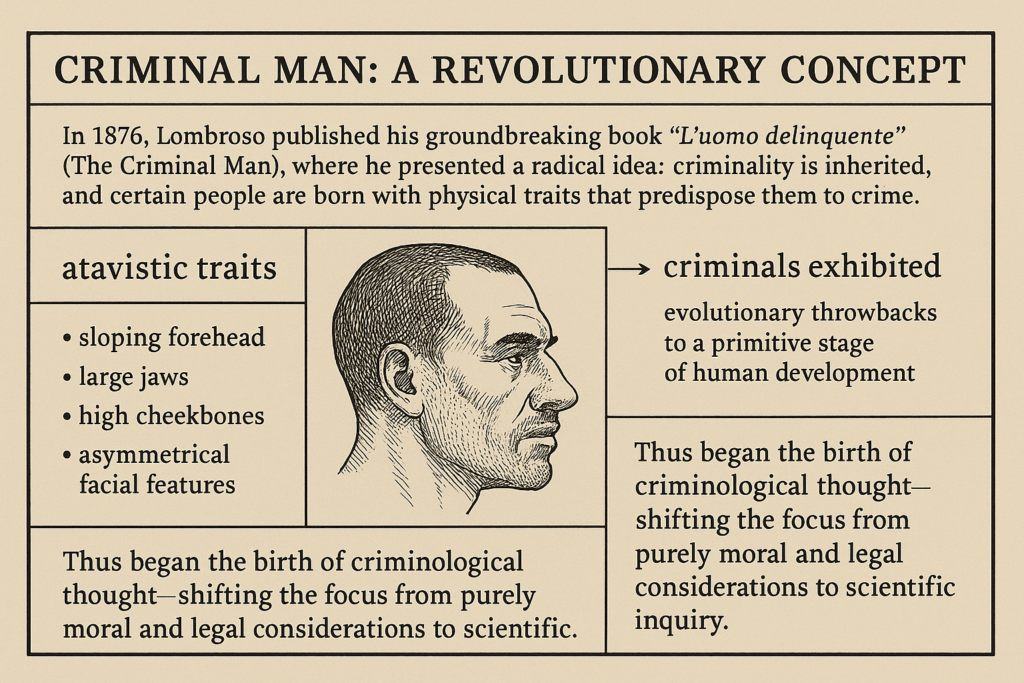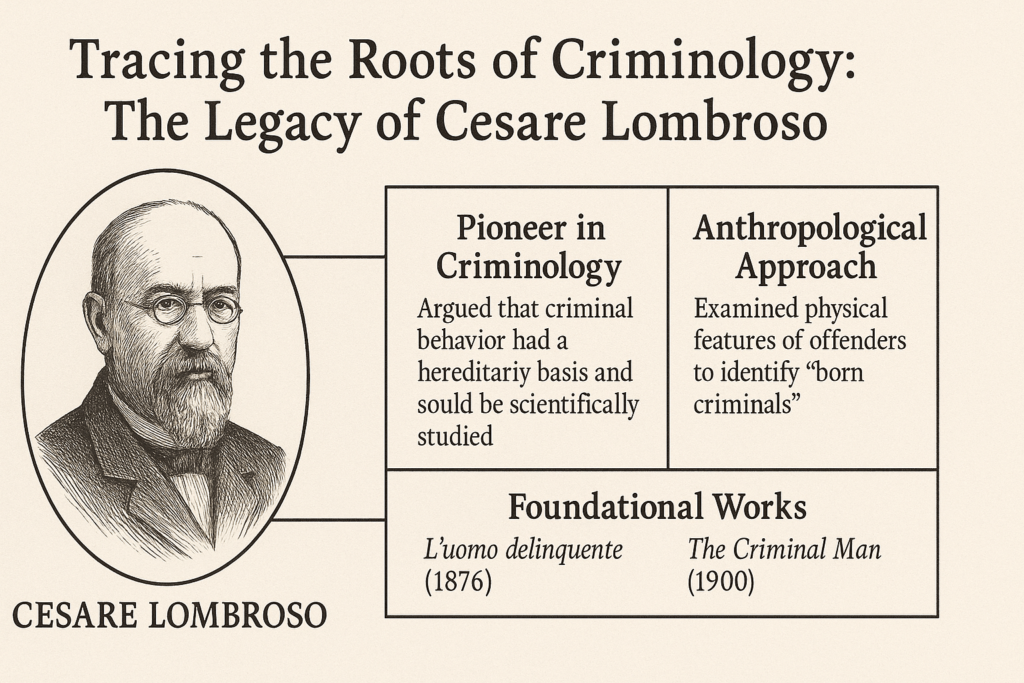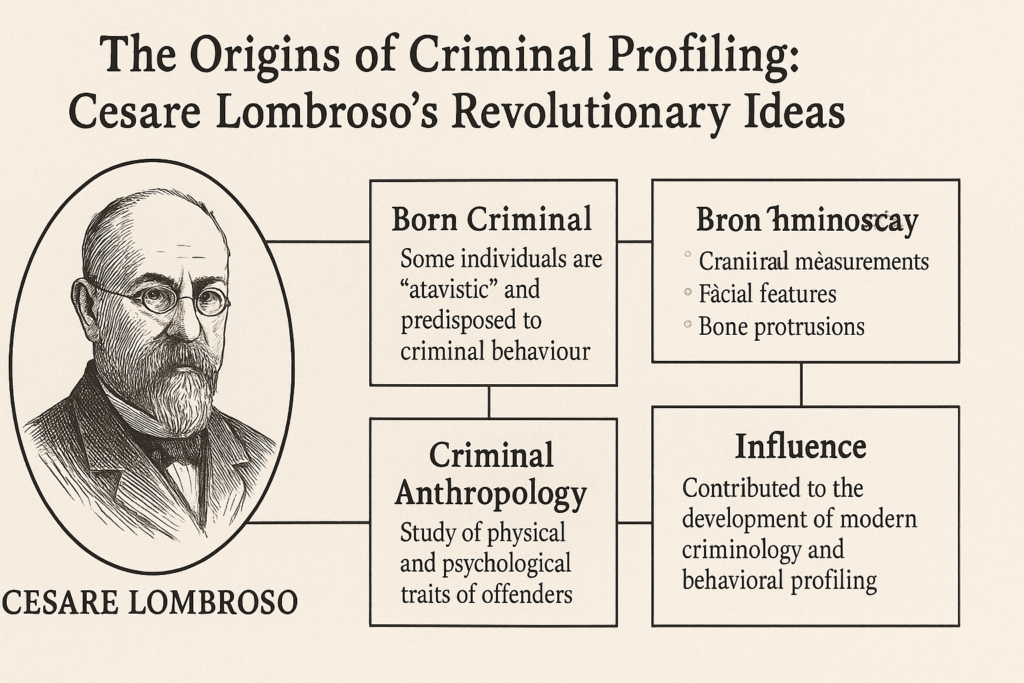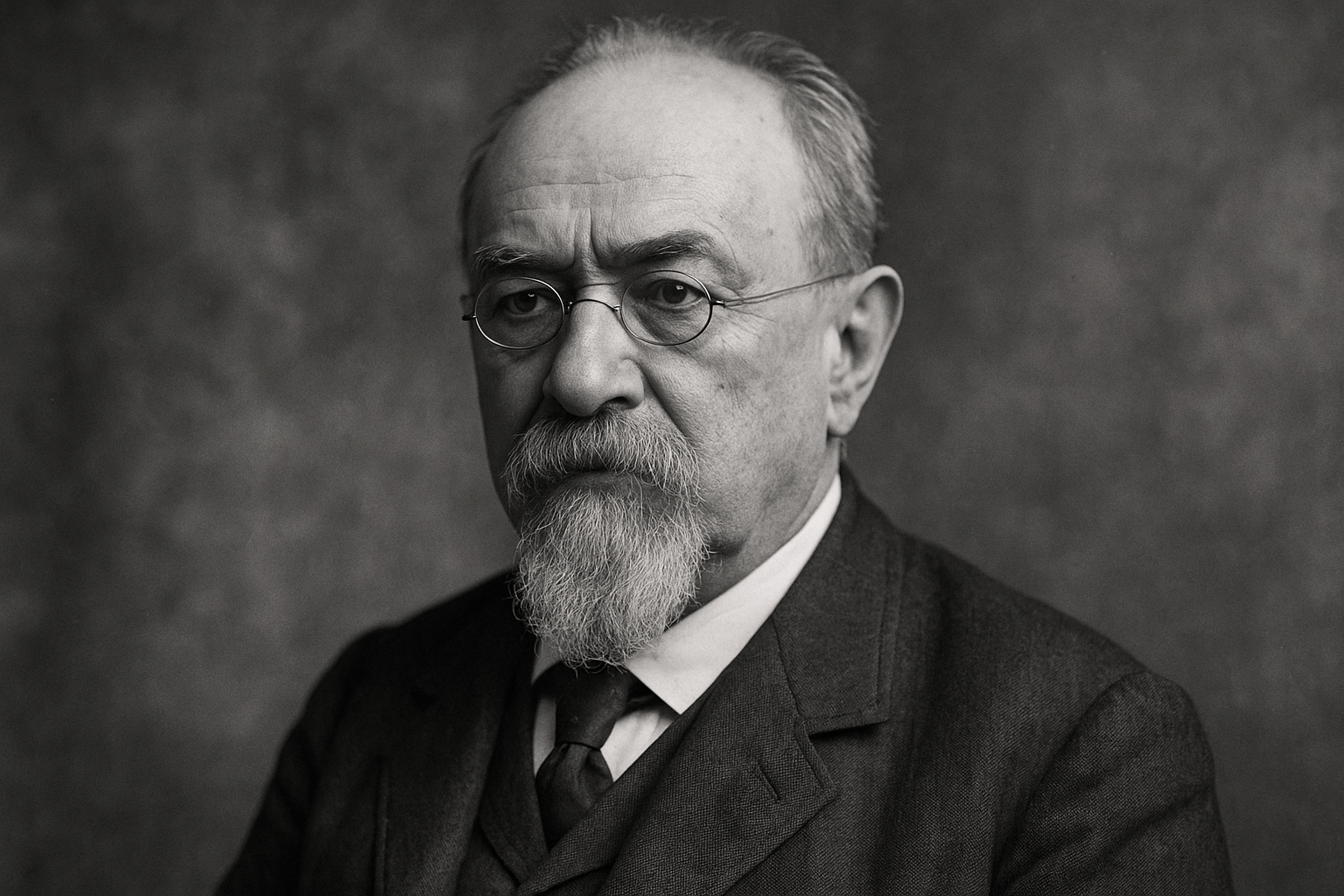Introduction
Criminology, as we know it today, was not always recognized as a formal academic field. Its roots stretch back to the 19th century when the world began to explore crime not only as a moral failing but as a scientific phenomenon. At the heart of this evolution was Cesare Lombroso, an Italian physician and criminologist whose controversial ideas marked the beginning of modern criminological thought. Though many of his theories have since been revised or rejected, his influence remains monumental. This article unveils the complex figure of Lombroso, tracing his contributions, examining his theories, and exploring the birth of criminological thought, which he so profoundly shaped.
While Cesare Lombroso’s views stirred great controversy, they also compelled future scholars to question the moral and environmental assumptions of criminality. This in itself was a pivotal moment that shifted crime discourse from moral blame to empirical investigation.
The Early Life of Cesare Lombroso
Born in Verona, Italy, in 1835, Cesare Lombroso was a man of many interests. He studied medicine at the University of Pavia, where he developed a fascination with psychiatry and the human body. His early medical work brought him into contact with the marginalized and mentally ill, an experience that greatly influenced his later theories about crime and biology.
As a military doctor, Lombroso encountered numerous prisoners and soldiers, which led him to consider the biological and psychological aspects of criminal behavior. These early experiences would lay the foundation for his most significant—and most controversial—contributions to criminology.
Lombroso’s diverse intellectual background—spanning literature, history, and science—provided him with a unique interdisciplinary approach to criminology. His encounters with mental illness and deviance during his early career were pivotal in challenging conventional moralist explanations of crime.
Criminal Man: A Revolutionary Concept
In 1876, Lombroso published his groundbreaking book “L’uomo delinquente” (The Criminal Man), where he presented a radical idea: criminality is inherited, and certain people are born with physical traits that predispose them to crime. This notion gave birth to biological determinism in criminology.
According to Lombroso, criminals exhibited atavistic traits—features that were evolutionary throwbacks to a more primitive stage of human development. These included characteristics such as a sloping forehead, large jaws, high cheekbones, and asymmetrical facial features. This theory implied that crime was not entirely a product of environment or free will but rooted in biology.
Thus began the birth of criminological thought—shifting the focus from purely moral and legal considerations to scientific inquiry.
Though the theory of atavism has been discredited, its legacy lives on in today’s nature vs. nurture debates. Lombroso’s attempt to link biology to behavior inspired future developments in genetics, psychiatry, and even evolutionary psychology.

Cesare Lombroso and the Birth of Criminological Thought
Lombroso’s ideas represented a seismic shift in how society viewed criminals. Before him, criminal behavior was largely attributed to sin, poor upbringing, or poverty. He argued that certain individuals were “criminals by nature”, destined to break the law due to their biological makeup.
This perspective sparked a new wave of criminological inquiry, encouraging researchers to consider empirical data, observation, and measurement. Though highly reductionist, Lombroso’s work encouraged other thinkers to explore the multifaceted nature of crime, including its psychological, social, and environmental dimensions.
Lombroso’s methods helped introduce statistical and anatomical analysis into criminology, setting a precedent for evidence-based practices in legal medicine and crime studies. His work marks the start of criminal anthropology as a legitimate discipline.
The Legacy of Lombroso: More Than Skull Shapes
One of the most infamous aspects of Lombroso’s theory was his emphasis on cranial measurements and facial features. His research involved analyzing the skulls of deceased criminals, attempting to draw links between physical appearance and criminal behavior. This approach would later form the basis for criminal profiling, though in a much more sophisticated form.
Modern criminologists now understand that Lombroso’s reliance on physiognomy and phrenology was flawed. His methods lacked statistical rigor and were influenced by cultural and racial biases. However, his central premise—that crime can be studied scientifically—remains one of his most important contributions.
Thus, we move from the era of skull shapes to the dawn of complex crime theories that examine both nature and nurture.
Even critics of Lombroso’s physical typologies acknowledge that his classification of criminal behavior helped stimulate the broader scientific community into refining more accurate typologies, including psychological and sociological frameworks.
From Skull Shapes to Crime Theories: Cesare Lombroso’s Impact on Criminology
Although most of Lombroso’s biological determinism has been discredited, it paved the way for more nuanced theories in the 20th and 21st centuries. Today, criminology integrates biology, psychology, sociology, and even neuroscience to better understand criminal behavior.
Lombroso’s emphasis on data collection and scientific methods inspired generations of criminologists to conduct research on crime causation. His legacy lies in creating the foundation upon which modern criminological theories were built.
Furthermore, Lombroso’s ideas encouraged an interdisciplinary approach, one that we now see in fields such as forensic psychology, criminal profiling, and criminological anthropology.
Modern scholars often revisit Lombroso’s work to better understand the historical roots of bias in forensic science. This reflection has encouraged more inclusive and ethical research in present-day criminology.
Tracing the Roots of Criminology: The Legacy of Cesare Lombroso
The history of criminology cannot be told without Cesare Lombroso. Even as his methods fell out of favor, his influence endured. He was among the first to suggest that criminal behavior could be predicted, understood, and potentially prevented.
Many early criminologists, such as Enrico Ferri and Raffaele Garofalo, expanded upon Lombroso’s work, leading to the formation of Italian Positivist Criminology. These thinkers emphasized societal influences, legal reform, and rehabilitation, blending biological and environmental theories.
Today, Lombroso’s legacy is both respected and scrutinized. While modern science has shown that crime cannot be determined solely by biology, his pioneering role in systematizing the study of crime remains pivotal.
Lombroso’s impact is also seen in the development of criminal justice reform movements, particularly those advocating for rehabilitation over retribution. His belief in identifying causes of criminal behavior indirectly supports humane treatment of offenders.

Cesare Lombroso’s Criminal Man: A Turning Point in Criminology
“The Criminal Man” was more than a book—it was a turning point. It sparked debate, inspired research, and divided opinion. Critics accused Lombroso of scientific racism and ethical insensitivity, while supporters lauded him for bringing rigor and objectivity to the study of crime.
What makes the book remarkable is its blend of anatomy, psychology, and sociology—even if imperfect. It laid the groundwork for later studies on psychopathy, antisocial behavior, and mental illness in criminals.
Today, criminologists refer to Lombroso’s work as proto-scientific, acknowledging its flaws while appreciating its historical importance. His book forced society to confront the idea that crime was not just a moral failing, but a human phenomenon worth scientific investigation.
The publication of The Criminal Man ignited global academic discussion. Its influence reached beyond Italy, inspiring criminological schools in France, Russia, and Latin America. This transnational impact cemented Lombroso’s place in the history of forensic science.
The Origins of Criminal Profiling: Cesare Lombroso’s Revolutionary Ideas
Modern criminal profiling owes a debt—however indirect—to Lombroso. While his approach was rudimentary, the idea that a person’s background, appearance, or behavior could offer clues about criminality was groundbreaking.
Today’s profilers use psychological analysis, behavioral science, and data-driven models to assess potential suspects. The field has moved far beyond atavistic features, but the seed of profiling was planted by Lombroso’s early attempts to categorize and analyze criminals systematically.
His methods may be outdated, but the conceptual leap from punishing crime to understanding criminals remains one of Lombroso’s enduring contributions.
While modern profiling rejects Lombroso’s physical determinism, his basic premise—that patterns can be found in the traits and behaviors of offenders—remains a foundation of investigative psychology today.

Controversies and Criticisms
Lombroso’s work was far from universally accepted. Even during his lifetime, scholars criticized his methods and conclusions. His theories were seen as deterministic, ignoring the role of free will and social context.
Additionally, his work often reflected cultural and racial biases, particularly in associating certain physical traits with non-European populations. These aspects have rightly come under ethical scrutiny in modern times.
Despite these issues, Lombroso’s pioneering work prompted the development of more balanced and inclusive theories. It also sparked important ethical conversations about how science should interact with justice.
The Modern Relevance of Lombroso’s Ideas
Although Lombroso’s biological determinism is largely obsolete, his desire to apply science to crime remains a vital principle in modern criminology. Research into genetics, brain function, and early childhood development continues to uncover how biology and environment interact to influence behavior.
Contemporary criminologists adopt a biosocial perspective, acknowledging the complex interplay of genes, environment, psychology, and society. This synthesis owes much to Lombroso’s early—if misguided—attempts to do the same.
Conclusion: The Mind Behind Criminology’s Origins
Cesare Lombroso was a visionary, a controversial figure, and undeniably a pioneer. He helped transform criminology from a philosophical and moral inquiry into a discipline rooted in empirical observation and scientific analysis. While many of his conclusions were flawed, his boldness in asking difficult questions opened the door for generations of researchers.
In unveiling Cesare Lombroso, we uncover not only the origins of modern criminology but also the enduring tension between science and society, between understanding and judgment, and between what we were and what we strive to become.

